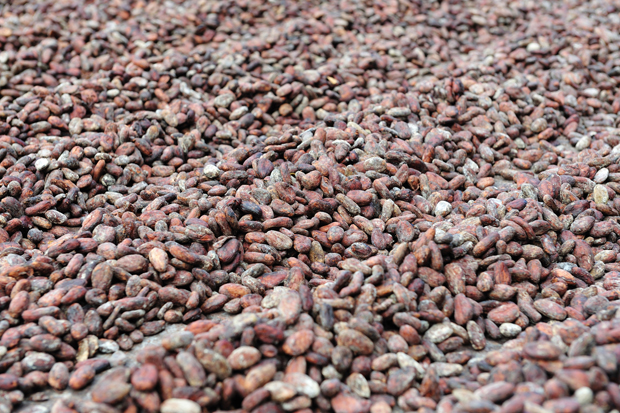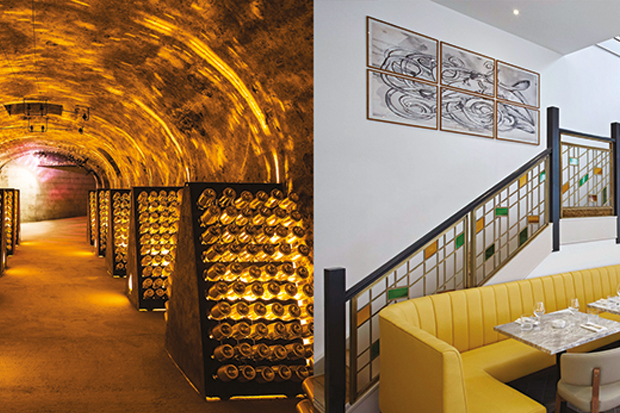In Grenada, Jonathan Ray attempts to extend his life by eating plenty of dark chocolate.
I’m in the House of Chocolate mini museum in St. George’s, Grenada, and Kindra, my guide, is giving me a brief chocolate master class. Not only do I learn all about its production, I stuff my face with as much chocolate as I’ve ever eaten in one sitting and – best of all – discover that I’ve probably prolonged my life by several hours, if not days, by doing so, chocolate being about as good for you as anything can possibly be. Well, according to Kindra anyway.
“Grenada chocolate is the answer, not matter what the question!” she exclaims with a laugh.
I discover that the cacao tree was first brought to Grenada from the Amazon in 1714 and its beans were first used as a form of currency under the Aztecs. In Grenada, the tree flowers every 24 hours and is harvested throughout the year.
The cacao seeds grow in large pods on these trees and in order to make cocoa they are harvested, fermented, dried, roasted, winnowed, ground, refined, tempered and moulded.
Kindra offers me some roasted beans to smell and some cocoa nibs to, well, nibble on. These are the tiny bits of roasted bean left after the winnowing process, whereby the shell of the bean is cracked and removed. The nibs are hard and, although neither refined nor sweetened, definitely taste of chocolate, deliciously so.
I then have a go at grinding some nibs into a paste. I have a quick taste and find it much more like the dark chocolate I know and love albeit still slightly bitter. I roll it into a ball with my fingers and notice how oily this purée is. This will be melted down into ‘chocolate liquor’ and moulded into blocks of raw chocolate.
Kindra explains that chocolate is like fine vintage wine not just because it is fermented, but also because the longer one leaves it, the more flavours one gets.
I can wait no longer and head to the counter to taste the finished product. I scoff some passion fruit chocolates, some ginger chocolates, some citrus chocolates, some salted caramel chocolates and several chunks of several bars of chocolate.
Kindra asks me to slow down and take more notice of what I’m eating. She breaks off part of a bar of dark chocolate.
“To really appreciate fine chocolate, you need to use your five senses,” she explains. “Of course, taste is the most vital but you must use your other four senses to evaluate the chocolate too.”
Kindra tells me that first I must look at the chocolate: it should have a nice gloss to it. I should then listen to it: when I break a square off the bar it should have a nice clean ‘snap’ to it. I should smell it by placing the square of chocolate in the palm of my hand: it should smell richly of cocoa. I should touch it: fine chocolate should have tiny little bumps on the surface. Finally, I should taste it, allowing it to melt on my tongue rather than biting it which can make the chocolate taste bitter.
I suddenly realise that I’ve just eaten an awful lot of chocolate. It’s hot, bakingly so, and on top of the two rum punches I had earlier I feel a little queasy.
Kindra suggests I sit down and then reassures me as to the health benefits of what I’ve just eaten. Apparently, if I remember correctly, dark chocolate can reduce stress, beat depression, regulate blood pressure, protect the blood cells, reduce the risk of diabetes and thrombosis, increase the blood flow to both brain and heart, increase one’s IQ, improve blood circulation, suppress coughs, protect against the sun and help weight loss.
Well that’s okay then. Chocolate is a super food and I’ve probably added at least another 45 minutes to my life with what I’ve just scoffed.
Gosh, I feel better already.
The post The Joy of Chocolate appeared first on The Spectator.
Got something to add? Join the discussion and comment below.
Get 10 issues for just $10
Subscribe to The Spectator Australia today for the next 10 magazine issues, plus full online access, for just $10.












Comments
Don't miss out
Join the conversation with other Spectator Australia readers. Subscribe to leave a comment.
SUBSCRIBEAlready a subscriber? Log in